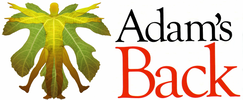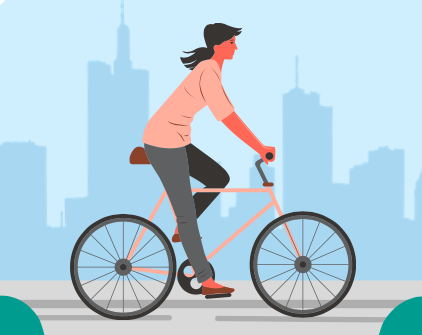Do you love to hit the trails and pedal yourself towards wellness? Cycling is a great way to build muscle tone and improve your fitness. It’s also a wonderful form of low-impact, cost-effective transport.But, as with any type of exercise, cycling can cause damage or pain. So, what are the health benefits, what injuries can occur, and how can you limit the risks? Let’s take a look...
Health benefits Research shows that cardiorespiratory fitness is improved by regular cycling. Your heart and lungs function better and your risk of cardiovascular disease (such as stroke, high blood pressure and heart attack) is lowered. Cycling uses several muscle groups and builds strength and stamina. It also helps with balance and coordination − which may help to prevent falls and fractures. But cycling has broader benefits than just physical. Frequent cycling lowers your risk of stress and is great for your mood. Cycling may even improve your self-esteem, helping you to feel more confident about your ability to achieve goals and live the life you want. That’s powerful! Cycling injuries What about the flip side? Because riding a bike involves your entire body, a range of injuries is possible. Common cycling issues include those to the back, knees, wrists, and hands. Problems can occur for a range of reasons: overuse − remaining in one position for an extended period of time, muscle strain and imbalances, and falls. Injury prevention Given the benefits of cycling, how can you prevent injury? Start with a well set-up bike. Specialised equipment − like a quality helmet, suitable shoes, and a padded seat and gloves − can reduce strain and injury risk. If you’re unsure how to set yourself up correctly, find a bike shop or riding group who can help. Posture is important. Ride with your elbows slightly bent, keep your hands on the handlebars, and alternate their position regularly. Make sure your seat and pedals are in the right position to allow your back, hips, knees, ankles, and feet to work efficiently and without strain. Try a wider, padded seat if you experience saddle numbness or pain. Stretch often. Make sure your back and core function well. If your spine doesn’t move correctly, or your muscular midsection is weak, your back will bear the brunt. Both of these problems can contribute to spinal stress and overuse- related low back pain. Cycling is a wonderful form of exercise. When you combine the right set-up and posture with optimal spine and core function, your health and happiness will bloom. If you have questions, ask. We’re here to help.
0 Comments
Leave a Reply. |
AuthorAdam's Back is a team of dedicated complimentary health professionals. Our aim is to support you in finding drug-free solutions for better health. Archives
July 2024
Categories |
Search by typing & pressing enter


 RSS Feed
RSS Feed